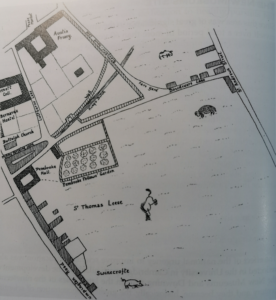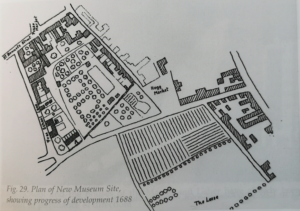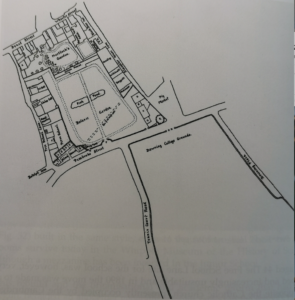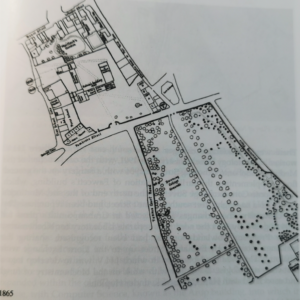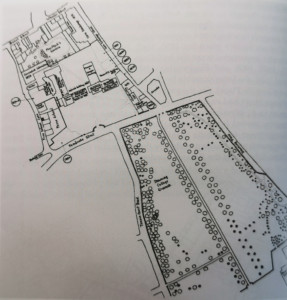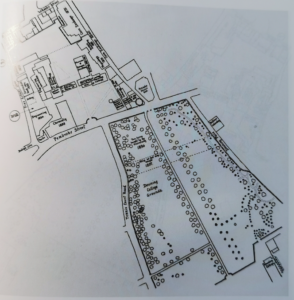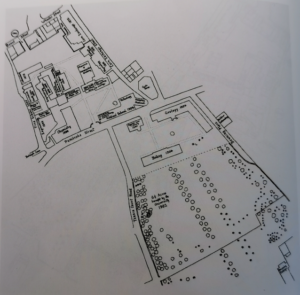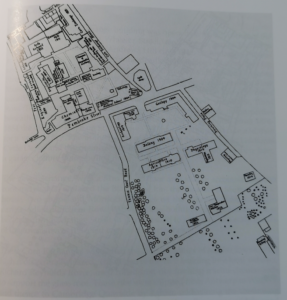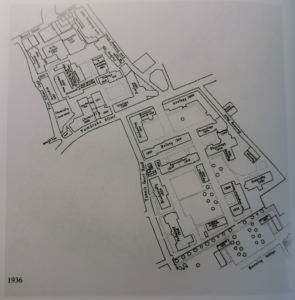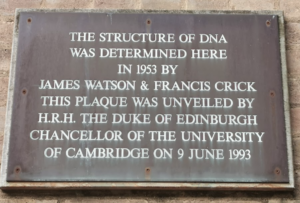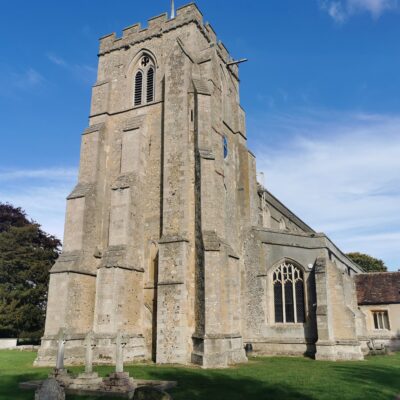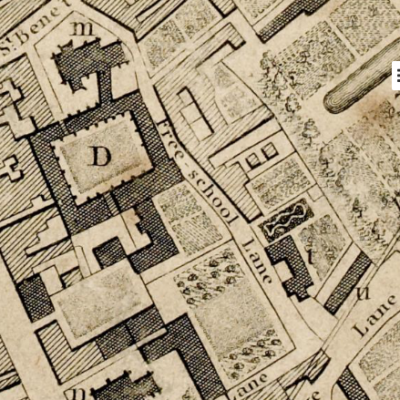Search by topic
- archaeology
- architecture
- bricklayer
- Building of Local Interest
- carpenter
- church
- crime
- dressmaker
- fire
- Great Eastern Railway
- listed building
- medieval
- oral history
- Public House
- Rattee & Kett
- Religious House
- Roman
- scholar
- school
- Then and Now
- tudor
- women
- work
- world war one
- world war two
Search by text
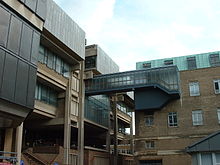
New Museums Site
History of New Museums Site
For General Information on this location see the Wikipedia entry.
Archaeological excavation on the site of the Old examination Hall, North Range Buildings took place at the end of 2016 and beginning of 2017. It revealed evidence of three phases of activity: domestic occupation from c.1050 onwards, the Augustinian Friary of c.1275/89-1538 and activity after the Dissolution in 1538.
The full report is available here:
The first phase probably related to one or two properties fronting onto Bene’t Street / Wheeler Street.
The occupation by the friary involved a portion of a building and a cemetery with 32 burials. 16 of the burials (all male where known) were accompanied by buckles. There was also a later period of new building. Unusually there were female skeletons found in this period.
Evidence of rebuilding at the time of the Dissolution was found. At some point before 1798 a large building was created which was probably part of the Green Houses associated with the Old Botanic Gardens.
The development of scientific education in the UK was spurred on by realisation of the progress in Germany and France in manufacturing ability after the Great Exhibition of 1851 and the Paris Exhibition of 1867. [See ‘One Man’s Cambridge’ by J A Charles p.73] Part of the response was the development of the new Museums and Downing sites in Cambridge at the latter end of the 19th century. J A Charles refers in detail to the work of G S Graham-Smith of the Pathology Department in 1936. His history of the development of the area included several sketches using historic maps and plans.
This plan is based on that by Richard Lynn in 1574. It shows the Austin friary founded in 1290. It was surrendered to Henry VIII in 1538. In 1545, John Hatcher, Regius Professor of Physics and Vice Chancellor in 1579, bought the house and left it to the University in his will in 1584. However it eventually passed to Stephen Perse who left part of the site for a free grammar school and for almshouses. The main halls of the school survive now within the Whipple Museum. The open King’s Ditch can be seen on the plan.
The 1688 plan is based on David Loggan’s original. ‘A’ marks the Perse Almshouses, ‘B’ is the Free School. The King’s Ditch is still open. The original 17th century stone archway into the garden was rebuilt at the entrance to the Cavendish Laboratory.
In 1720 most of the old Friary buildings were pulled down.
Contribute
Do you have any information about the people or places in this article? If so, then please let us know using the Contact page or by emailing capturingcambridge@
License
This work is licensed under CC BY-NC-SA 4.0








